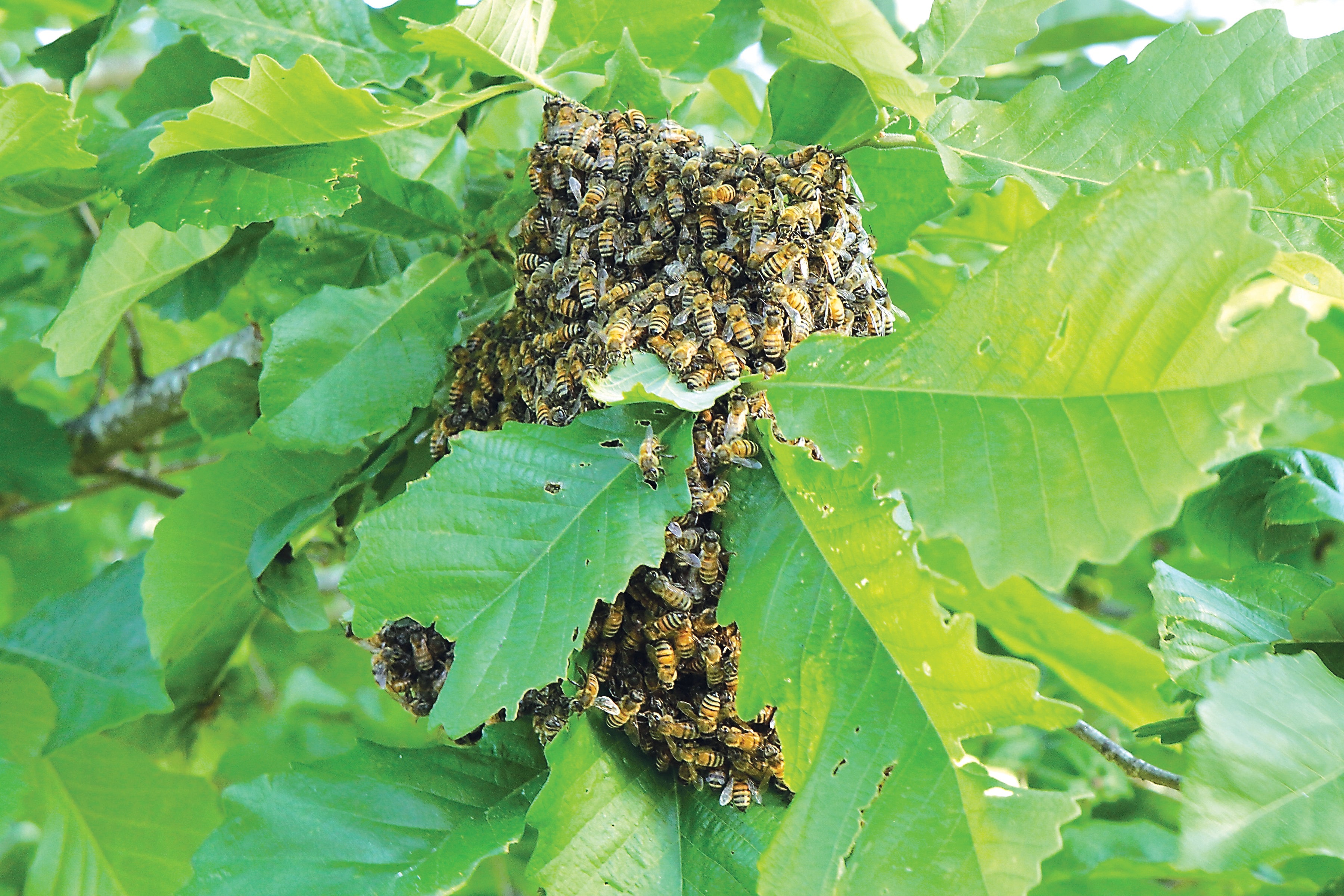Bees on the move
Published 5:00 am Tuesday, April 26, 2022

- A swarm of bees settles in a swamp chestnut oak in a Lake Charles resident’s back yard Thursday. The swarm remained in the tree approximately 48 hours before relocating on its own. (Donna Price / American Press)
The honey bee may be Louisiana’s state insect, but still—some people don’t like seeing a swarm near their home.
Daniel Day is one of 19 sources listed on the LSU AgCenter website as a contact for bee/wasp removals and swarm captures in Southwest Louisiana. From now until the end of May is his busy season, he said Monday. Day is currently averaging about three phone calls a day from people wanting him to remove bee swarms from their property.
Swarms happen when a group of honey bees moves from a hive to establish another hive. When a bee colony outgrows its home or becomes too congested or populated, worker bees signal that it is time to swarm. Swarms are usually seen clustered in a ball, hanging from a branch or structure.
Day said that bee scouts will go out from the swarm cluster and find suitable places to establish a hive. They then return to the swarm and share this information with the others. Bee swarms usually find a home within a day or two and the bees will leave on their own.
After swarming season ends, the nature of the calls Day receives generally change.
“That’s when people call up and ask, ‘Can you get them out of my house?’” he said.
That’s because the bees sometimes select a spot to relocate where people don’t want them.
There are not too many places from which Day has not been asked to remove bees. His listing on the LSU AgCenter website reads, “Homes, barns, outhouses, electrical boxes, under trailers, you name it. I establish all bees removed into hive boxes so that they can continue what God intended them to do.”
“Sometimes I have to remove siding or sheetrock to get to them,” he said.
Day uses a special bee vacuum to suck up the bees so they can be relocated.
“If we used a regular Shop- Vac, it would kill them,” he said. “It’s too powerful.”
The bee vacuum provides a gentle suction that does not harm the bees.





